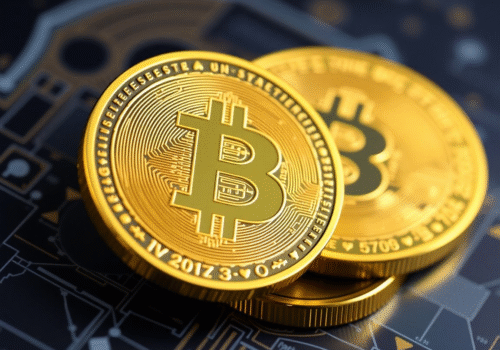Is it better to swap or sell crypto
In the rapidly evolving world of cryptocurrencies, investors and traders are constantly seeking the most efficient ways to manage their digital assets. Among the myriad of choices, two stand out: swapping and selling. These methods serve as the backbone for converting one form of crypto asset into another, but they operate under different principles and can have varying impacts on an investor’s portfolio. To gain a deeper understanding of these differences, platforms like changenow.io provide detailed insights and comparisons. This article delves into the distinctions between swapping and selling crypto, helping you decide which option might suit your trading needs better.
Understanding Crypto Transactions
What is a Crypto Swap?
A crypto swap involves directly exchanging one cryptocurrency for another without converting to a common fiat currency first. This transaction is typically executed on platforms known as decentralised exchanges (DEXs) that use automated processes to facilitate trades directly between users’ wallets. The primary advantages of swapping include:
- Cost Efficiency: Swaps usually incur lower fees than traditional exchanges because they bypass intermediary currencies and additional transaction layers.
- Speed: Transactions are often faster, as they do not require the usual processing times associated with selling on an exchange.
- Cross-Chain Capabilities: Many DEXs support trades between different blockchain networks, enhancing the flexibility for users to manage diverse portfolios.
What is Selling Crypto?
Selling crypto, on the other hand, involves trading your cryptocurrency for fiat money (like GBP or USD) or another cryptocurrency through a centralised exchange (CEX). This method typically requires the crypto to be sold in one transaction and the purchase of another currency in a subsequent transaction, often involving:
- Intermediaries: Central exchanges act as the middlemen facilitating the transactions.
- Fees: Each step of the transaction—from selling to withdrawing funds—may incur separate fees, which can accumulate significantly.
Comparing Swapping and Selling
Operational Differences
The processes of swapping and selling are markedly different:
- Swapping is straightforward: select the currencies you wish to exchange, and the platform does the rest, often in a single transaction.
- Selling involves multiple steps: selling the asset for a base currency, potentially transferring funds to different wallets or exchanges, and then purchasing the new currency.
These operational differences mean that swaps can be more appealing for those looking for quick and straightforward transactions, while selling might appeal to those seeking to cash out into fiat currency or take advantage of currency-specific market movements.
Financial Implications
- Transaction Costs: Swapping generally offers the advantage of lower transaction costs since it eliminates the need for an intermediary currency. For instance, converting Bitcoin directly to Ethereum on a DEX involves just one transaction fee, whereas selling Bitcoin for USD and then buying Ethereum on a CEX involves multiple fees.
- Market Impact and Slippage: Selling on exchanges can be subject to slippage—a change in the price between the time a transaction is ordered and when it is executed—especially in volatile market conditions.
Use Cases and Suitability
The choice between swapping and selling often depends on specific financial goals and market conditions:
- Swapping is ideal for:
- Quick portfolio adjustments.
- Diversifying or consolidating positions within the crypto space.
- Taking advantage of arbitrage opportunities across different platforms.
- Selling is preferable when:
- Converting crypto assets into fiat currencies.
- Taking profits out of the market.
- Managing tax liabilities, as each transaction can be tracked in terms of capital gains or losses.
The choice between these methods can significantly affect your investment strategy and outcome. It’s crucial to consider your long-term financial goals, the immediate financial landscape, and the specific features of each method to make the most informed decision.
Conclusion
Choosing whether to swap or sell cryptocurrencies is a decision that should be tailored to individual financial strategies and the current market environment. Swapping offers a streamlined, efficient way to trade between different cryptocurrencies, often with lower fees and faster execution. This makes it an attractive option for those looking to quickly adjust their portfolios or avoid the higher costs associated with centralised exchanges.
However, selling provides the security and regulatory compliance of traditional financial systems, which can be comforting, especially for those new to the crypto markets. Selling also allows for direct conversion into fiat currency, which is essential for those looking to realise profits in a more stable and widely accepted form of money.
As the cryptocurrency landscape continues to mature, understanding the nuances between these two options will be crucial. Whether you are looking to optimise for speed, cost, security, or regulatory compliance, both swapping and selling have pivotal roles to play in the management of digital assets. By carefully considering your own needs and the specific circumstances of each transaction, you can effectively navigate this complex and rapidly evolving market.
FAQs
Crypto swapping, while efficient, carries its own set of risks, including the potential for smart contract vulnerabilities and the less stringent regulatory oversight on many decentralised platforms. Users must also be wary of liquidity issues, which can affect the ability to execute large trades at desired prices.
Swapping can indeed be more profitable in scenarios where transaction fees are minimized and market timing is crucial. It allows traders to move quickly between different cryptocurrencies without incurring the delays and multiple fees associated with converting to fiat currency.
In many jurisdictions, both swapping and selling trigger capital gains tax events. However, the complexity can increase with swaps, as every trade between cryptocurrencies must be calculated based on the fair market value of the coins at the time of the transaction.
Swapping is generally faster because it involves a direct exchange of assets on a decentralised platform without the need for intermediary processing or approvals that are typical in selling through centralised exchanges.
Beginners should consider selling if they are less familiar with the intricacies of blockchain technology and seek the added security of regulated exchanges. Swapping might be better suited for those who have a good understanding of the risks and benefits associated with decentralised platforms and are looking for quicker transaction times.





